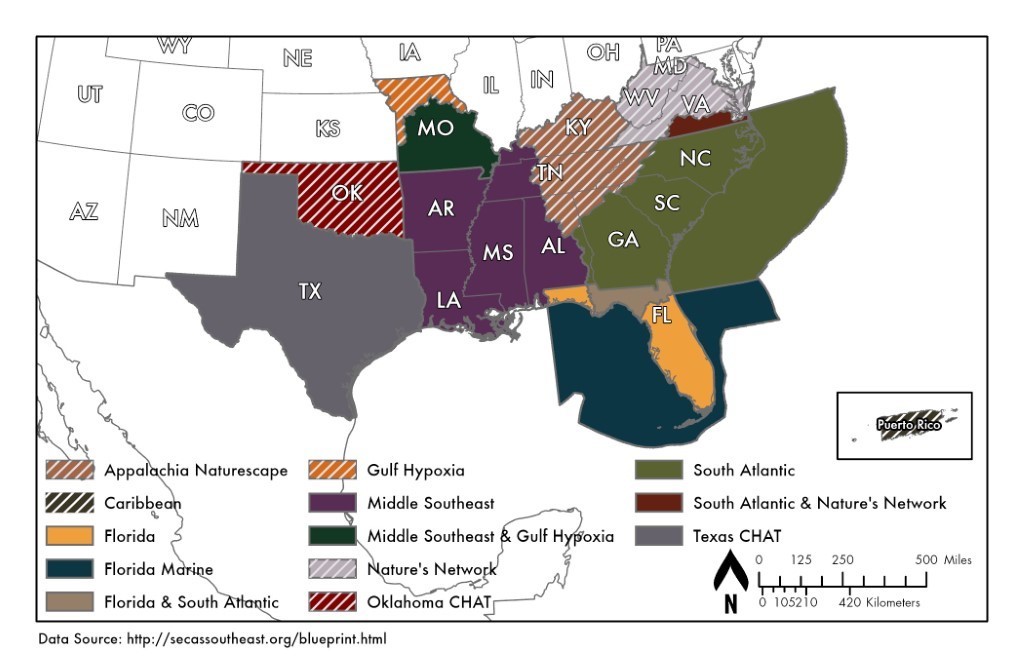Mechanics of the Southeast Conservation Blueprint

 In collaboration with the U.S. Fish and Wildlife Service, the Water Institute of the Gulf has led development of a collaborative report entitled “Mechanics of the Southeast Conservation Blueprint.” The report discusses the overall framework of SECAS and the Southeast Conservation Blueprint and examines the history, governance structure, framework, and methodology that underpin five of its subregional blueprints. The blueprints examined are those which include the geography of the northern Gulf of Mexico coast: Crucial Habitat Assessment Tool (Texas), Middle Southeast Blueprint, South Atlantic Blueprint, Florida Conservation Blueprint, and Florida Marine Blueprint.
In collaboration with the U.S. Fish and Wildlife Service, the Water Institute of the Gulf has led development of a collaborative report entitled “Mechanics of the Southeast Conservation Blueprint.” The report discusses the overall framework of SECAS and the Southeast Conservation Blueprint and examines the history, governance structure, framework, and methodology that underpin five of its subregional blueprints. The blueprints examined are those which include the geography of the northern Gulf of Mexico coast: Crucial Habitat Assessment Tool (Texas), Middle Southeast Blueprint, South Atlantic Blueprint, Florida Conservation Blueprint, and Florida Marine Blueprint.
Each subregional blueprint was developed independently of other blueprints by regional conservation partnerships. Each of these efforts engaged local stakeholders to develop regionally appropriate approaches and methodologies to best address the specific conservation needs and priorities of their geographies. Yet there are consistent themes and goals across these subregional blueprints which are brought together in the Southeast Conservation Blueprint.
The Water Institute’s summary of the internal mechanics of the Southeast Conservation Blueprint is intended to increase understanding of these commonalities and identify opportunities for increased synergy and utility of the Southeast Conservation Blueprint in management planning and decision making for Gulf coast restoration and conservation.
The report was developed as part of the Water Institute’s ongoing work with USFWS under a cooperative agreement titled “Advancing the goals of SECAS: A program to improve Southeast Conservation Blueprint utility in the Gulf of Mexico.” The broader goals of this effort are to collect, improve, and coordinate existing data into the Southeast Conservation Blueprint to increase its utility in the Gulf region. In the northern Gulf of Mexico, actionable, science-based tools are greatly needed as critical habitats face threats from both natural and anthropogenic stressors and there are currently large investments being made in land management, conservation, and restoration.